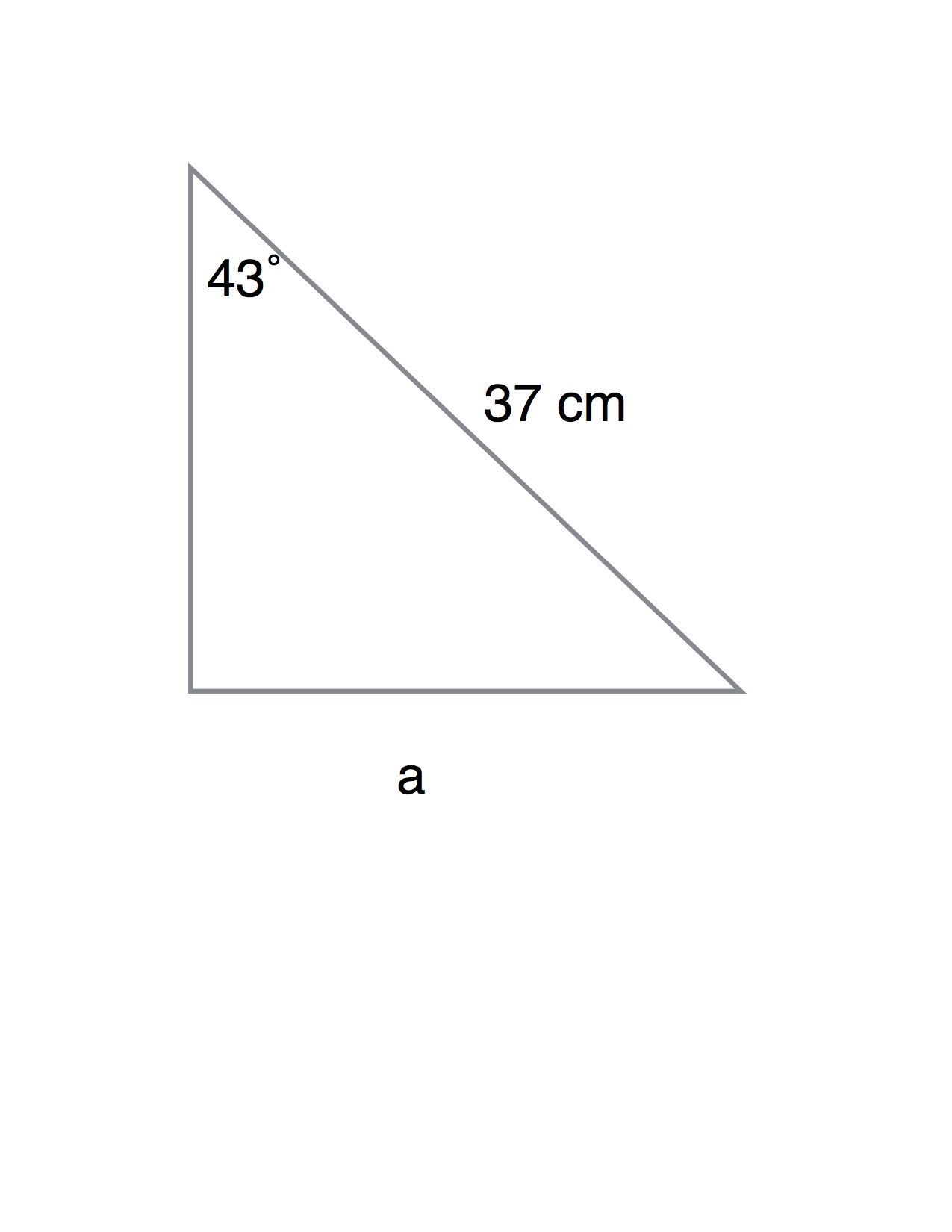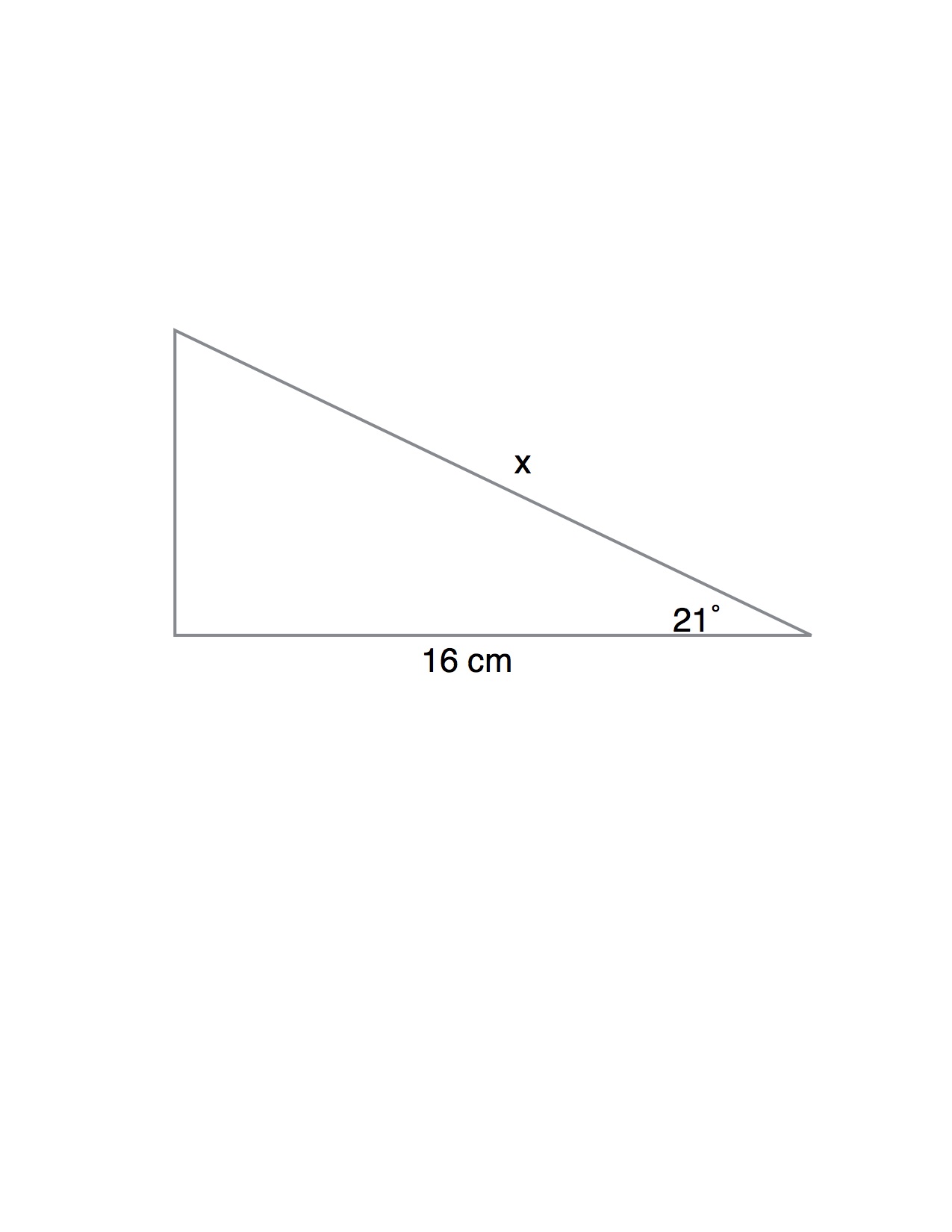How and when do we use SOHCAHTOA?
1 Answer
Below are a few examples I have prepared.
Explanation:
Multiplication:
Example: 
First, we have to find what positions side a and the side measuring 37 cm are relative to the given angle, which is
By SOHCAHTOA, an opposite and a hypotenuse gives
Now, we write our proportion.
Now, we must solve for a. This can be done by using the property
Calculating, we get that a measures 25.23 cm.
The trick to the multiplication: always make a proportion.
Division:
Consider the following example:

Once again, from
Writing our proportion:
Here, we have a division. Same thing as last time however; we use the property
The best trick:
If you are solving for the hypotenuse, and the ratio you are using is sin or cos, then it will be a division (the side you are solving for is on the bottom ). If you are solving for one of the legs, it will be a multiplication. However, tangent depends on the case (it can be either way). As I said many times before, most importantly, set up your proportion and use the property
Feel free to send me a message if you need any additional help.
Hopefully you understand better now.

